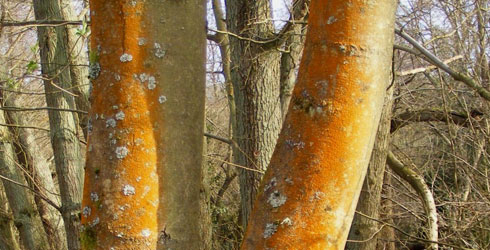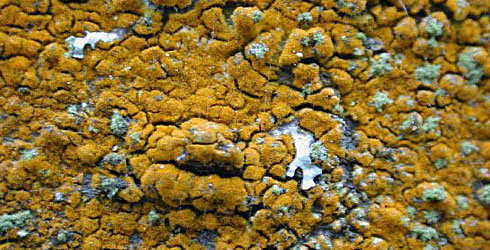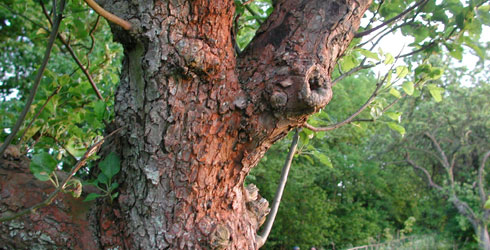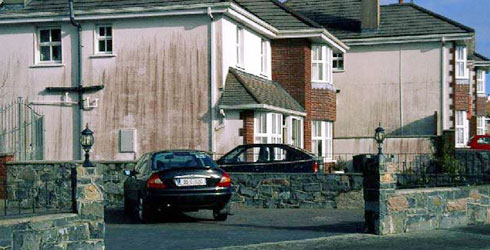Trentepohlia abietina
Trentepohlia abietina is an alga that forms bright orange or orange-brown patches on tree trunks.

View under the microscope of the reddish, short filaments of swollen or elliptical cells of Trentepohlia umbrina. © P V York
The orange-red pigment protects the alga against intense sunlight.
This alga is easy to find in the more humid westerly parts of the British Isles.
Its relatives - including Trentepohlia iolithus - form unsightly red streaks on buildings.
Trentepohlia is the most common algal genus in lichens.
Species detail
-

Taxonomy
Trentepohlia abietina forms felt-like patches on tree trunks. Find out what gives the patches their texture.
-

Distribution
Trentepohlia abietina usually grows on tree trunks. But where?
-

Biology
Trentepohlia abietina is widely distributed. Find out how this alga reproduces.
-

Conservation
Trentepohlia species are not harmful to trees but are often considered an unsightly nuisance. Find out where.
-

References
Get reference information for Trentepohlia abietina.
Images

Distinctive orange coloured covering of the Trentepohlia abietina on trunks of two ash trees near Toys Hill, Kent.
© D M John
Close view of the orange felt-like covering on tree bark of Trentepohlia abietina.
© M D Guiry and F Rindi
Reddish colouration caused by the crustose covering Trentepohlia umbrina on the bark of an apple tree in Scadbury Country Park, Bromley, Kent.
© D M John
The reddish discoloration of the wall of a suburban house in Galway City, Ireland caused by Trentepohlia iolithus. It is known locally as ‘red rust’.
© M D Guiry and F Rindi
Orange-coloured patches of Trentephohlia abietina on a tree trunk along with grey-coloured crustose lichens.

Close view of red-coloured patches of the crustose Trentepohlia umbrina - sometimes grows with T. abientina and confused with it.
Author
Professor David John
Scientific Associate
Department of Botany
A word from the author
"My attention has been drawn to Trentepohlia abietina by lichenologists and amateur naturalists who have noticed, in recent years, an increase in the number of orange-red tree trunks in south and south-eastern England. It is only possible to speculate on the reasons for the increase in Trentepohlia - perhaps decreased pollution, short-term climatic change - until such time as a systematic research study is undertaken."
